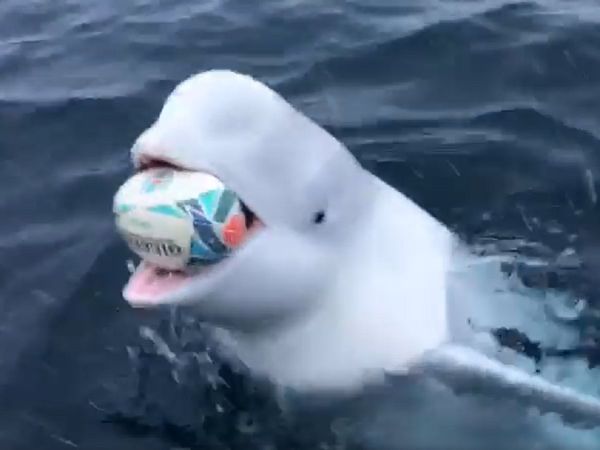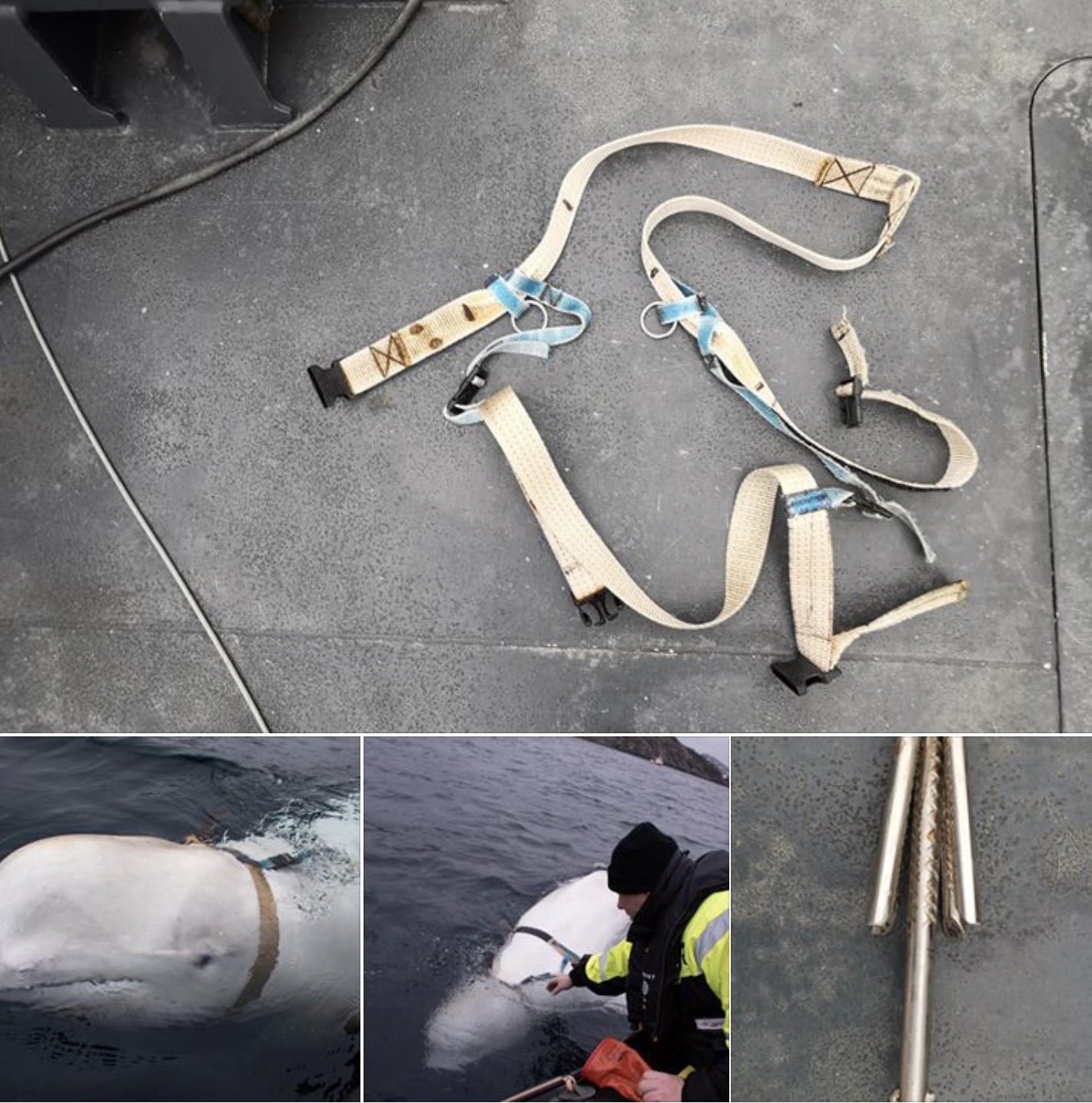
- Inspiring People -
- 5mins -
- 738 views
Beluga playing fetch in viral video has a mystery background
Researchers and specialists believe “Hvaldimir” is former captive beluga but the speculation doesn’t end there…
Ball-fetching beluga suspected by some of being escaped Russian military asset
A beluga apparently playing fetch with a rugby ball in a viral video last November has been confirmed to be Hvaldimir, a whale spotted off the coast of Norway earlier in April and suspected by some of escaping the Russian military.
“Yes, we can officially confirm it is Hvaldimir,” said a statement to HuffPost from the Hvaldimir Foundation, an initiative of the nonprofit Norwegian Orca Survey dedicated to monitoring the now-famous Hvaldimir (even though he is not an orca). The viral video shows someone leaning over the side of a boat and tossing a rugby ball in the general direction of a beluga whale. The whale then fetches the ball as someone can be heard saying, “That’s crazy, yeah?” — The clip was reposted several times across Facebook, Twitter and Reddit, and viewed by millions.

Beluga filmed playing fetch is known to researchers
Even as the video surfaced, some scientists and science journalists who saw it immediately suspected the beluga was Hvaldimir, who has been observed retrieving objects dropped by humans before.
And while some claimed the video had been shot in Antarctica, biologist Jackie Hilderling determined it was likely filmed on a boat currently in Norwegian waters. (She also pointed out that belugas only live in Arctic seas, making it next-to-impossible the video was filmed in Antarctica.)
Hvaldimir first made international headlines in April last year after he approached fisherman near Hammerfest, Norway. The animal was wearing a tight harness that featured a camera mount and had the words “Equipment St. Petersburg” on it.
The harness immediately fuelled speculation that the creature had escaped from some sort of Russian naval training facility, and he became widely known in the media as the “Russian spy whale.” That speculation also led to him being called Hvaldimir, a portmanteau of the Norwegian word for whale (“hval”) and Vladimir, as in Russian President Vladimir Putin.
However, there is no hard evidence that Hvaldimir is a Russian Navy escapee, much less a spy whale. Back in April 2019, retired Russian Col. Viktor Baranets conjectured that if the whale were really a spy, his harness probably wouldn’t have been labelled like that.
“If we were using this animal for spying do you really think we’d attach a mobile phone number with the message ‘please call this number’?” the colonel told Russian broadcaster Govorit Moskva, as per the BBC. Baranets added that Russia does train “military dolphins,” but it doesn’t keep that program a secret.
Baranets also told Reuters he’d heard that Russian scientists used beluga whales “for tasks of civil information gathering.”
Source: HuffPost

The ultimate goal is for Hvaldimir to be able to remain in the wild without human interaction
But while the beluga’s exact origin remains a mystery, experts are confident that Hvaldimir was previously in captivity and that his learned dependence on people is likely why he was malnourished when first spotted. That’s why the Norwegian Orca Survey authorised a feeding plan in May to help get the beluga’s weight stabilised.
“The ultimate goal and hope was for Hvaldimir to be able to hunt and remain in the wild without any human interaction,” said the Hvaldimir Foundation statement. Hvaldimir is currently “showing signs that he is hunting for himself,” but researchers are continuing to keep track of his sightings.
The organisation also urged anyone who comes across Hvaldimir to “respect his space.” Encouraging him to get too close to humans could “damage all of our efforts” to help him reintegrate into the wild, the group said.
In the meantime, the Hvaldimir Foundation has been posting updates of Hvaldimir sightings on Facebook.
“We are happy to report that he demonstrates a positive trend in weight gain and his attitude and behavior seem to indicate an increased confidence as he navigates the fjords of Norway,” reads a post from late October. “Stay safe out there, Buddy!”
From an article by Hilary Hanson for HuffPost, first published in November 2019

Cetaceans and the military
- Russia does not have a known history of using whales for military purposes, though the former Soviet Union had a training program for dolphins.
- The animals, equipped with echolocation, have been used to locate underwater mines and find and rescue people from the water.
- The U.S. Navy Marine Mammal Program in San Diego currently trains bottlenose dolphins as well as sea lions “to detect, locate, mark and recover objects in harbors, coastal areas, and at depth in the open sea,” according to its website. This training has gone on since 1959.
- In the 1970s, the Navy started to explore the use of beluga whales, which can go into deeper and colder depths than dolphins or sea lions, PBS’ Frontline reported.
- In 2016, NBC reported that Russia’s Ministry of Defense requested to buy five bottlenose dolphins for an unknown reason. The dolphins were purchased and were to be delivered to Sevastopol in Crimea.
Source: Huffpost

